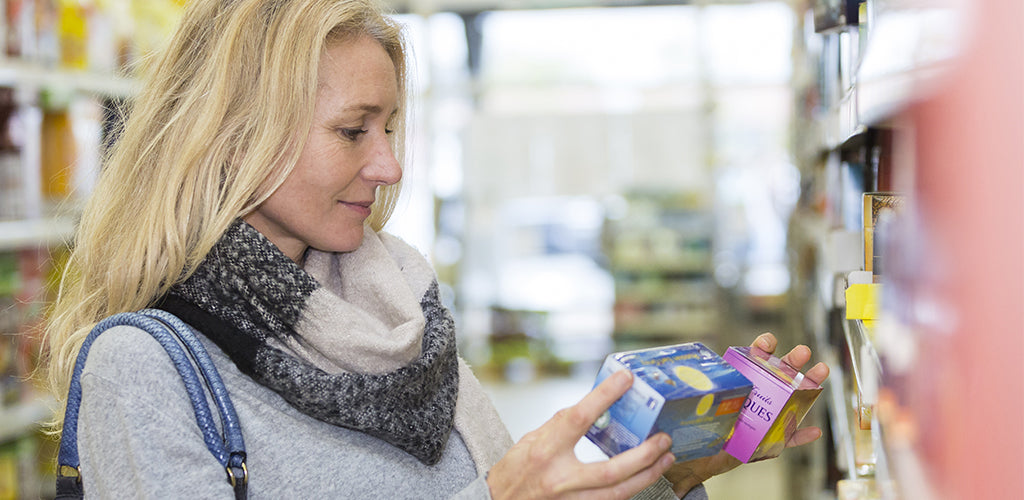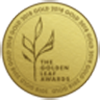Five Australian tea trends for business owners to stay across

There are many secrets to success, but knowing your market is arguably the most important. So as a business owner, how can you predict what Australian tea drinkers want?
If you’ve tried to look for hard research on Australian tea trends, you will find it’s pretty thin. In our coffee-obsessed nation, there is not a lot of information around on tea-drinking patterns. But as the popularity of tea starts to grow, we are seeing new trends emerge in different segments of the industry.
By adopting these trends early and understanding why consumers are gravitating towards certain teas and ways of consuming them, you can set your business apart and develop a compelling brand.
All of our research and day-to-day dealings with tea businesses points to one overarching theme: consumers are moving away from black tea in a teabag. From herbal to specialty teas, there is so much opportunity right now to build a niche. The question is – which of these trends aligns with your business?
Before we dive into the trends below, let’s take a look at what we know about the current state of the market.
Who is drinking tea in Australia?
The latest research from Roy Morgan was done in 2016. It found that Australians drink an average of 9.5 cups every week, and that 50% of Australians will drink at least one cup of tea per week (this figure is up by 12% on 2012’s findings).
Australia’s most avid tea-drinkers are in the 65+ age group. These tea lovers are drinking approximately 11 cups per week, closely followed by the 50–64 age bracket.
In all age brackets, coffee trumps tea as the most popular beverage, except one: those aged 14–17 are more likely to drink tea than coffee, and this is an opportunity for tea businesses to build loyalty in this demographic, before they get the taste for coffee.
Mapped out, our tea-drinking culture looks like this:

Image Source: Roy Morgan Research
The overall trends unearthed by Roy Morgan as part of this major survey were as follows:
- Sales of regular tea have started to decline
- Herbal/fruit tea sales have crept up
- Green tea sales have plateaued
Of course there’s a lot more to building a tea business than studying the numbers. Tea is a hugely emotive beverage, and there are many different ways that people connect with it. From health reasons to that all-important Instagram shot, the more macro trends within the industry are sparked by a variety of motivations.
Trend 1: Herbal and functional teas
An upswing in health-conscious consumers is naturally creating more opportunities in tea. Health-driven consumers (often young females) gravitate towards products that have a message of wellbeing. This makes them more adventurous, as they’re likely to try new ingredients like marshmallow root and raspberry leaf, purchase functional teas created for specific issues such as digestion, and choose natural flavouring.
The researchers at Roy Morgan have also found that herbal tea drinkers are less likely to buy genetically modified food and are generally more health conscious; avoiding fatty foods and unhealthy snacks.
Demand among this market saw turmeric and kombucha explode in popularity in the last two years, and was also partly responsible for matcha’s recent surge in popularity. Kombucha alone has grown seven times in the last two years, while soft drink sales have started to decline.
Want to see the health segment of the tea market in action? Head to your local Coles or Woolies and you’ll see a rainbow of boxes in the tea aisle, all tapping into this mindset. One thing you can learn from these brands is that they’re packaging their herbal teas in smaller boxes. This lowers the barrier of entry for consumers trying these for the first time (similarly, if you have found your tea samplers to be popular, this is why).
This trend is also likely to spark an increased interest in iced teas as consumers look for low-sugar alternatives.
In summary, the trends to watch are:
- Herbal teas
- Naturally flavoured teas
- Functional teas
- Iced/cold-brew teas
- Kombucha
Trend 2: Gourmet food culture
Australia’s MasterChef-fuelled gourmet food culture is showing no signs of abating, with the latest insights from Nielsen highlighting our love affair with premium groceries. This study found that one in four Australians currently purchase premium beverages (and in this instance, a premium product is one that costs 20% more than the average price point of its respective category).
But, as we’ve already said, there’s a lot more to trends than just the numbers. Increasingly consumers are looking for a deeper point of connection with the products they’re buying, and this is a big factor behind the growth in our gourmet food culture.
So what constitutes a premium tea in a consumer’s mind? Three in five consumers are happy to pay more for products that are responsibly sourced. This means that Fair Trade, organic and provenance are all ways to tap into the mindset of these customers.
Below the surface, the push for authenticity is also driving this trend. In a survey of 2,000 customers across Australia, the USA and the UK, 86% said they believe authenticity is important when deciding which brands they like.
In summary, the trends to watch are:
- Authentic/premium branding
- Organic and Fair Trade teas
- Teas that can clearly demonstrate their origins
Trend 3: Mindfulness
What has the meditation and gratitude movement got to do with tea? More than you may think.
In the West we are increasingly exploring new vehicles for mindfulness. In addition to mediation, tea increasingly is citied as a way to be more present in day-to-day life. In fact, if you Google ‘tea and mindfulness’, you will get more than 8 million results.
From hosting tea meditation events to developing mindful tea-drinking guides, tea brands are taking notice and niching into this segment of the market. And with mindfulness touted as an antidote to stressful and busy lifestyle, herbal teas link in with this wider cultural trend.
This all circles back to authenticity in your brand, and understanding your customers value. Mindfulness is a broad church, and for many consumers it is as much about presence as being a mindful consumer who makes social and environmentally aware decisions at the checkout.
In summary, the trends to watch are:
- Experiential branding
- Eco-conscious branding
- Organic and Fair Trade teas
- Herbal teas
Trend 4: Flavoured teas
The research from Roy Morgan we highlighted earlier showed that Australians are drinking more tea, but that consumption of ‘regular tea’ (i.e. black tea in teabags) has fallen. In its place Australians are not only opting for green tea, they’re also seeking out flavoured teas.
And it makes sense that they should – Australia has a warm climate and these kinds of teas can be drank warm, but they also lend themselves to serving over ice. As we’ve already seen, soft drink consumption has fallen, but consumption of other cold beverages like kombucha is growing. If there’s one case study that highlights this trend, it’s T2. Brands such as this are introducing consumers to new flavoured blends, with a strong push towards iced tea.
Increasingly, however, consumers are looking for naturally flavoured teas, creating new opportunities to offer your own naturally flavoured custom tea blends.
In summary, the trends to watch are:
- Iced tea
- Kombucha
- Ready-to-drink teas
- Naturally flavoured tea
Trend 5: New hospitality experiences
With awareness of specialty increasing – albeit slowly – new opportunities are being created in the hospitality space. As well as focusing on improving their tea menus, dedicated tea cafes are appearing. From Sydney’s The Rabbit Hole to Sonder Dessert in Brisbane, these cafes are opening tea up to new markets.
A Japanese tea and dessert house, Sonder Dessert shows how a niche can be developed using tea in the café market. The menu includes matcha and hojicha lattes together with specialty loose-leaf Japanese teas, and tea cuisine ranging from matcha parfait to hojicha mousse and matcha brûlée. And, of course, the aesthetics of its offerings can’t be ignored. Cafes like Sonder really are doing it for the ‘Gram, and this picture-perfect social media savviness opens the tea world up to younger markets.
Other ways the hospitality industry is exploring the world of tea is through tea-infused cocktails and tea and food pairing events. As Australia continues to become more multicultural and our appreciation of new culinary experiences grows, the market is increasingly open to new food experiences.
In summary, the trends to watch are:
- Speciality tea cafes
- Improved tea menus
- New tea experiences
- Use of tea in food menus
- Social media marketing
Finally, when in doubt, look to the USA
Social media may have sped up the rate at which we adopt trends from the USA, but the reality is the Australian market is generally a step behind. Take matcha as an example, which exploded in the US before it was adopted here. For tea businesses, this presents an opportunity to look abroad for the latest ideas.
In the USA, ready-to-drink teas are the fastest-growing segment of the tea market (now accounting for 46% of the market and growing). Tea bags represent 44% of the market and loose leaf sales are up by four percent. Unlike Australia, the USA’s largest tea consumers are millennials.
Given tea’s health benefits, there is also a trend of using tea in food products like energy bars and even yoghurts. And mainstream brands are taking notice, with Starbucks acquiring Teavana in 2012 and subsequently expanding its tea offerings to include everything from matcha lemonade through to wellness teas and organic chais.
North of the US in Canada, teaBOT is an example of the kinds of retail experiences that can be developed with tea. At a teaBOT kiosk, customers can create their own custom tea blend and either purchase a cup of tea or a packet of tea for home.
In summary, the trends to watch are:
- Loose-leaf tea
- Ready-to-drink teas
- Premium teas
- Growth in the millennial market
- Use of tea in food products
- Tea as a health
- New tea retail experiences
So with Australia’s culinary culture continually evolving, new opportunities are arising for tea businesses to seize their own niche in the market.
ABOUT TEAVISION
For all the tips and tea trends we pick up through our global network, subscribe at the bottom of this page for fortnightly updates.
- Tags: news tea trends
- Melinda Halloran








Comments 0